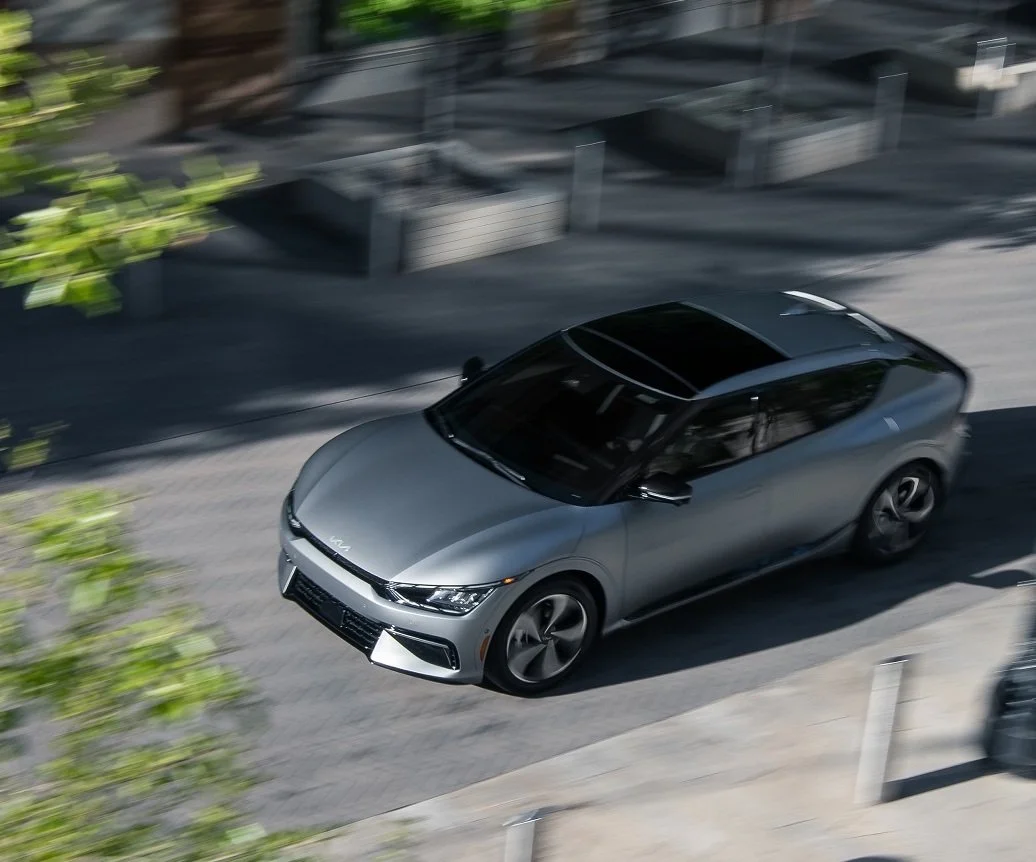Kia EV6 here in four versions
/Kia reiterates claim of superior range over Hyundai equivalent
FOUR variants and the option of a nifty feature that turns it into a power station has been confirmed for Kia’s EV6, but pricing remains a mystery.
The EV6 portfolio will span an rear-drive ‘Air’ with a 58.0 kWh battery that is described as the ‘standard range’ option and also embraces three editions with a 77.4kWh battery (long range) across another rear-drive Air, plus two all-wheel-drives, called Earth and GT-Line.
In providing this detail today, and ambiguously suggesting the first EV6s will now arrive “towards the beginning of the second quarter” (does that mean March or April?), Kia New Zealand has also proposed range estimates that exceed optimals claimed for the Hyundai sister ship already on sale here in five formats.
The Auckland operation cites that the EV6 Air RWD Long Range will travel 528km on a single charge and that the all-wheel-drive models are capable of covering approximately 506km between charges.
Those ranges are up to almost 50km greater than optimals for the Ioniq 5. Some advantage gain seems due to the Kia’s battery capacity.
Only the base format of either car has a common battery of equal output. Otherwise the most powerful battery in the Hyundai is rated at 72kWh.
The models’ respective ranges are calibrated on the world light vehicle protocol (WLTP) which is used now by car makers to achieve more relevant economy figures than the previous scale, called NEDC.
Both capable of 800-volt fast charging, the EV6 and Ioniq 5 sit atop a common platform, called the Electric-Global Modular Platform (E-GMP), that will in time underpin a range of battery-pure vehicles from Kia and Hyundai, along with the latter’s premium brand, Genesis.
Pricing, performance and charging information has not been shared, yet it already seems cross-shoppers might want to pay careful attention to specifications in each line, especially if Kia follows through on managing the same sort of price advantage its products tend to hold over equivalent Hyundais in other model families.
At first glance, it appears some features that are standard to the parent brand’s Ioniq 5’s might be cost-extras on the EV6 equivalents.
Kia says its models will take an LED lighting package, have dual zone climate control, five USB media and charge ports, paddle shift for regenerative braking and smart cruise control with stop and go function.
Safety systems ape those in the Ioniq 5, so run beyond multiple airbags to include lane keep assist, lane follow assist and forward collision avoidance assist (car/ pedestrian/ cyclist/ junction turning).
A power memory and power lumbar support on the driver’s seat is standard, as are a pair of 12.3-inch infotainment screens.
For the Earth AWD and above heated and powered ‘Premium Relaxation’ seats implement. So too a heated steering wheel and a head-up display.
The GT-Line AWD is alone in taking 20-inch alloy wheels and ventilated front seats and also has extra collision avoidance systems. The flagship also has a 14-speaker Meridian audio and the option of a powered sunroof and a remote park assist function. These are standard to Hyundai’s flagship.
Kia says its car has up to 1600kg braked towing capacity, but says that it model dependent. The towbar is optional.
Kia NZ is promoting availability of a ‘Vehicle to Load’ (V2L) and ‘Vehicle to Vehicle’ (V2V) plug, which makes the EV6 a power source on wheels capable of supporting electrical appliances, power tools to camping equipment and, in V2V, another EV. However, it is not made clear if this is a cost extra, as it is with the Ioniq 5, for nearly $1000.
Meantime, Kia overseas has shared further details of the new-generation Niro, potentially a starter here in the third quarter of 2022 to replace the current gen car now into its sixth year of sale.
The new car retains its predecessor's choice of hybrid, plug-in hybrid and all-electric powertrains, but in a more modern-looking and larger body. It’s 65mm longer overall, 20mm wider, 10mm taller and 20mm longer in wheelbase than the car it replaces.
Only technical detail for the 'conventional' hybrid has been so far been commented on. It marries a 77kW/144Nm 1.6-litre non-turbo four-cylinder petrol engine with a 32kW electric motor for a combined output of 104kW. Power feeds to the front wheels through an upgraded six-speed dual-clutch automatic transmission.
Kia claims a fuel economy figure (according to domestic testing) of as low as 4.8 litres per 100 kilometres.
Hybrid and plug-in hybrid Niro variants will offer a 'Green Zone' function that enables the car's all-electric driving mode when it enters a busy residential area, or approaches a school or hospital. All models will offer regenerative braking, switchable between multiple regeneration levels.
Styling inspiration is from a 2019 concept, called HabaNiro.
The interior features a twinned big screen display similar to that in the EV6, 74-colour ambient LED cabin lighting, multi-zone climate control, a 10-inch colour head-up display, a rotary 'shift-by-wire' gear selector, wireless smartphone charging, and USB-C ports. A power tailgate is also available.
Other tech features on offer include a new Voice Car Control system, the ability to use the driver's phone as a key to unlock and start the car (without the key fob present), support for a Kia Connect smartphone app, interior cameras to “record high quality videos of memorable journeys and scenic locations” and the ability to control smart home devices from the car's touchscreen.




















